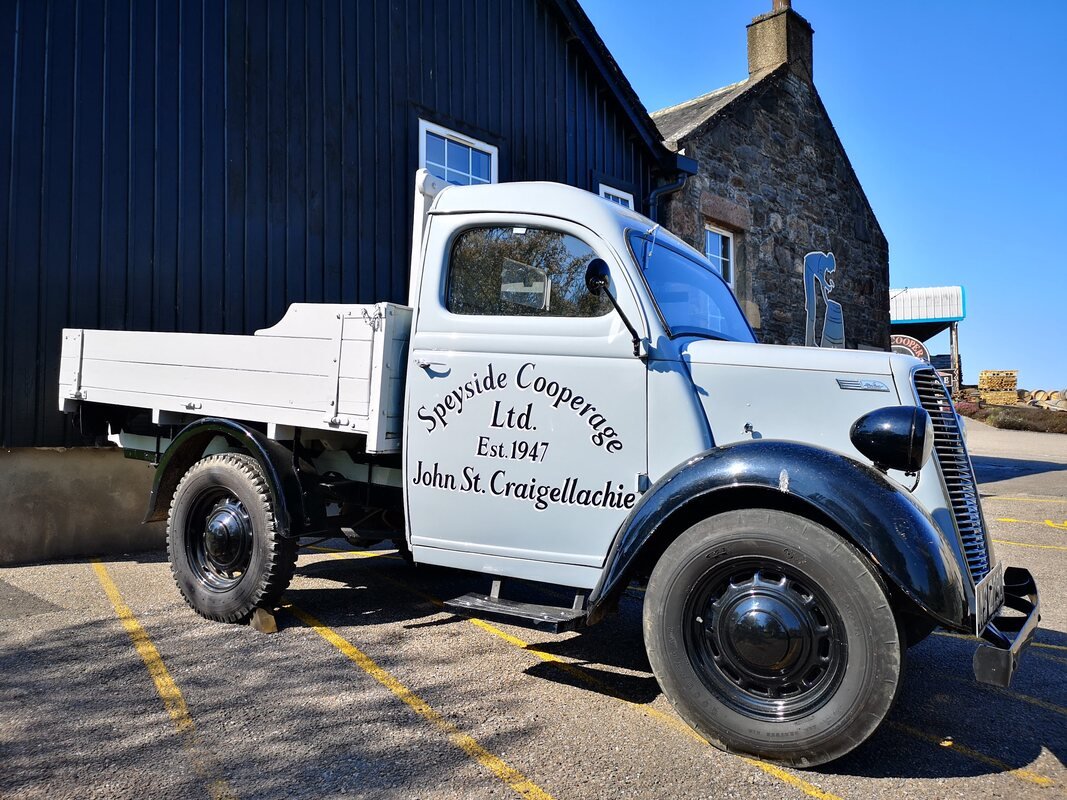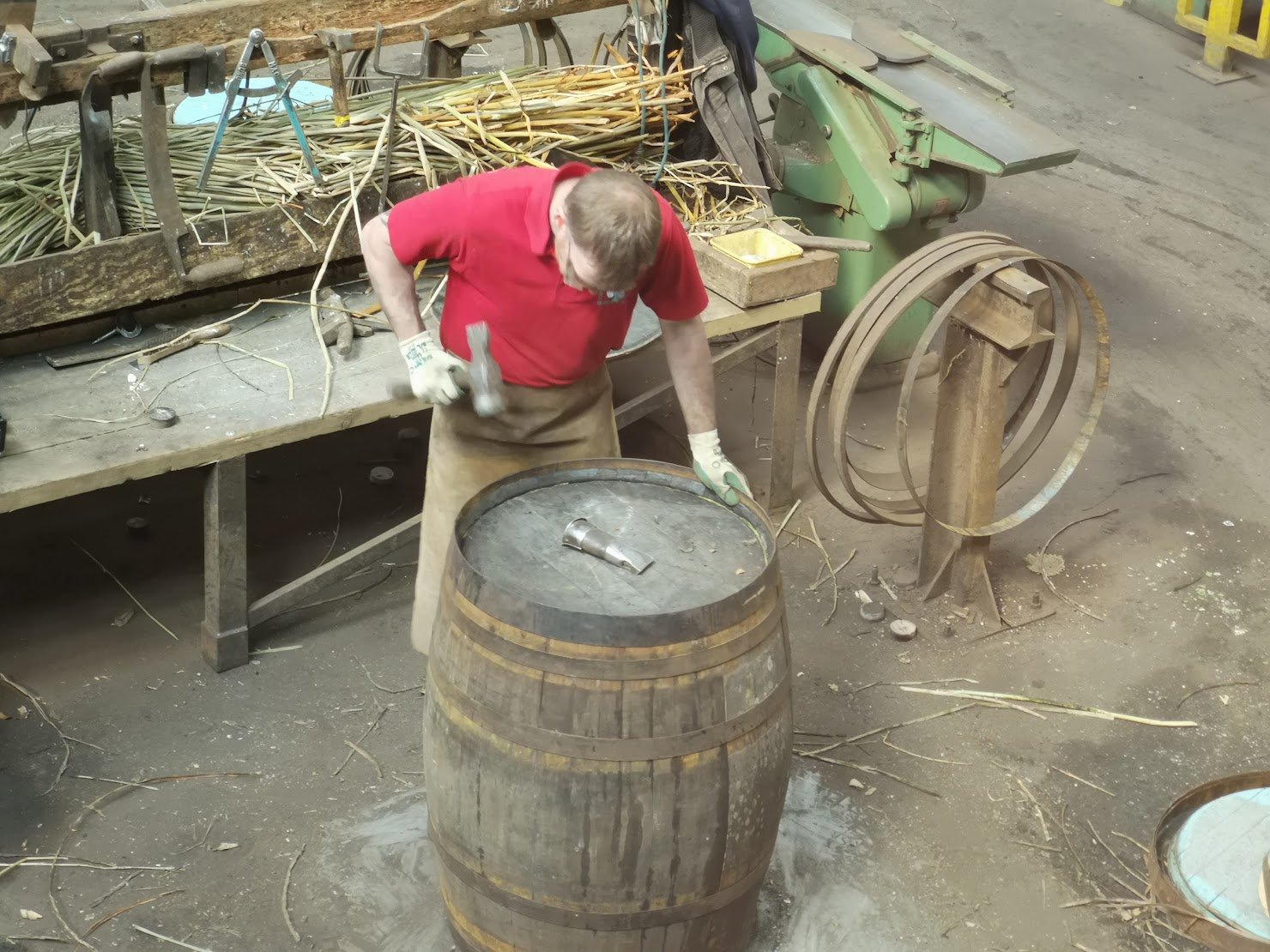A Taste of Whisky in Speyside, Scotland
(updated March 2024)
Castles. Tartan. Rugged men. Kilts. Rugged men in kilts. Mountains. The Loch Ness Monster. Fluffy highland cattle. Gerald Butler. Outlander.
Scotland is home to many fine things. But the finest of them all is Aqua vitae, aka uisge beatha, (water of life in Latin and Scottish Gaelic) aka, whisky. Or maybe it's Gerald Butler. Or kilts. Or.... well you know where I'm going.
In fact, Scotland is home to a lot of whisky. It has no fewer than 5 distinct whisky regions and the largest, most famous of those is Speyside.
The Speyside region sits in the northeast of Scotland and surrounds the mighty river Spey, one of the largest and fastest flowing rivers in Scotland.
Known as the whisky triangle of Scotland, the region is filled to the brim with whisky distilleries. More than, 50, in fact and although they are not all open to the public all the time, a very many are open to the public year round, which means you can combine spectacular Scottish scenery with tours at some of the finest and well-known distilleries.
I'm sure you've heard of Glenfiddich, The Glenlivet, The Macallan, Ballindaloch, Tamdhu, to name but a few!
So when the opportunity came up to spend two weeks in Speyside for work, walking one of Scotland's National trails, of course I said 'Slàinte!'
I mean, whisky and walking, what could possibly go wrong!
Spoiler alert! As it turns out, nothing much went wrong at all - sorry - which isn't great for exciting stories, but is great if you want to keep your job and do it well. Apart from some unseasonably fantastic weather and pretty relaxed walking, I learned a lot about whisky. I joined whisky tours at two distilleries, ate three different whisky ice creams and learned the value of the barrel at one special cooperage.Read about my long-distance hike along the Speyside Way here
Water, Barley & Yeast
That's it.
Those are all the ingredients you need to make whisky: water, barley and yeast. However, to say that all you need is some water, some grain and some yeast to create this magical transmutation into something close to divine, into the 'Water of Life' is to greatly underestimate the skill and care which goes into the process.
But first, a little history:
Back in the day (a couple of hundred years ago) the Scottish highlands used to be a pretty lawless place, with bandits, smugglers and various illicit carrying-ons all around. And illicit alcohol making stills too. There used to be approximately 300 stills hidden all around the Speyside valley. All illegal, local, run by families, kept underground.
Then, in 1822 King George IV decided to pop down for a state visit and tried some of this reputed drink. He'd heard of this aqua vitae stuff and really wanted to try it.
George Smith, happy to oblige, offered his lord some of the Glenlivet. So impressed was the king with this marvelous beverage that he ordered barrels of the stuff to be transported back to his main residences.
And that is when he found out this wasn't possible, as it was made only in small batches using ahem, not entirely legal stills.
George, who was a savvy businessman as well as a farmer, petitioned to be the first to get a licence to produce the stuff legally. This did not endear him to his neighbours and fellow illegal whisky brewers as the taxmen now cast their beady greedy eyes all around.
Some of the locals even challenged him with intent to kill and so the local Laird gave George a set of pistols with which to defend himself. And these same pistols can be seen to this day in the Glenlivet distillery. George must have been a considerably charismatic and charming man, for he managed to avoid been shot and the rest, as they say, is history.
The Glenlivet Distillery thrives to this day and is one of the biggest producers in Speyside, although, like many of the distilleries these days, it is owned by the Pernot Ricard company.
How to make whisky, a brief overview
Most of the Speyside distilleries get their water from a nearby river or stream. The Glenlivet has a famous well, for example, called Josie's well, which they use to make their whisky; the Glenfiddich Distillery take their water from the Fiddich river and so on.
The barley used to be locally produced but it is now often shipped in, although still carefully selected. Some of the distilleries, such as the Balvenie Distillery, still have a malting floor, where the barley is left to sprout first.
After that, the barley is ground and then gets soaked in big drums called mash tuns. Once this process is complete the resulting watery mash gets fermented with the addition of yeast, into bigger drums called wash backs.
Barley fermenting in drums called ‘washbacks’
Each distillery will have their own slightly different ways of doing this although it is essentially the same process. And then the liquid gets distilled in stills. Each distillery has stills which are unique in shape, all adding to the distinctiveness of each whisky.
The distilled whisky then gets 'cut' (basically poured into different 'sections') in the spirit safe - it is literally under lock and key here - and sometimes distilled again before the next part of the process - my favourite part: the barrels.
The stills at the Glenfiddich distillery
In order for a whisky to be allowed to be called a Scotch whisky, it has to be matured for a minimum of 3 years in big oak barrels in Scotland. During this time, these barrels add a lot of flavour to the whisky and there are several ways to adjust this flavour.
How Whisky Barrels add Flavour
These big whisky casks are usually first used for bourbon or sherry before they store whisky, adding unique seasoning to the wood and then and the insides of the barrels go through a firing process which will add further, differing, qualities. This charring can be light ,medium or heavy, adding not just flavour but also colour to the finished whisky.
Once the barrels are filled they are put to rest in big sheds or warehouses and the whisky is so precious that the distilleries will share storage spaces with each other, so that no entire batch of any one distillery will be lost in the case of a fire or other emergency!
Speyside has its very own working traditional cooperage which is well worth a visit. Based in Craigellachie, they run tours which show the entire process of making the barrels and you will even get to see the highly trained coopers in action.
The Angel’s Share
While the barrels are resting, a magical thing happens. The angels will come and take their share!
What a wonderful explanation for what is really just the process of evaporation! Anyway, after this resting period, the whisky is bottled and Voila! Uisge beatha (Water of Life).
Oak whisky casks, resting and waiting for the angels to take their share
I learned all of this, and so much more, whilst I walked solo on a multi-day hike along the Speyside Way. This trail starts in Buckie in the North (it lies along the coast on the Moray firth, east of Inverness) and makes its way south through Speyside and into the Cairngorns National Park, finishing at Aviemore.
Walking this trail is an excellent way to combine a fairly easy long-distance trail with some spectacular scenery and the opportunity to visit several world-renowned whisky distilleries, cute little towns, interesting history and plenty of flora and fauna In fact, the trail passed right by or close to more than 20 distilleries, such as Glenfiddich, Macallan and Cragganmore as well as the above mentioned Glenlivet, to name but a few.
A road trip would be a great way to explore the region too, and gives you even more scope to visit and taste to your heart’s content.
How to get to the Speyside Region
The nearest airport is in Inverness. There are also good train connections from places such as London, Edinburgh or Glasgow.







